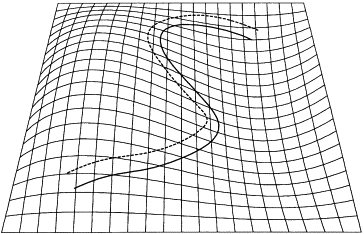Isoparametric Curves on Bezier Surface:
In the parenthesis, the expression involves basis functions Bn,j (u) and control points pi,j. Note down that the basic functions do not depend on i; but the control points do. Thus, we may define a new function qi (v) to reflect this fact :

Clearly, each qi (v) is a Bézier curve described by control points pi0, pi1, . . . , pin (that means the i-th row of control points). As a consequence, we have m + 1 new points q0(v), q1 (v),. . . , qm (v). As v is fixed and may be considered as a constant, points q0 (v), q1 (v), . . . , qm(v) will not alter positions as u changes. As a result, the surface equation becomes

As v is fixed, p(u, v) is in fact a single variable parametric equation in u and therefore represents a curve on the surface. It is a Bézier curve in u described by m + 1 control points q0 (v), q1 (v), . . . , qm(v).
Thus, we conclude that any isoparametric curve along with v fixed is a Bézier curve described by a set of control points that may be computed from the equation of the surface. Interchanging the role of u and v, we shall have the similar conclusion for isoparametric curves in the v direction. Figure illustrated isoparametric curves on a Bézier surface in both of the directions.

Figure: Isoparametric Curves on Bezier Surface